Blood and Black Lace (1964)
Directed by: Mario Bava
Written by: Giuseppe Barilla, Marcello Fondato, Mario Bava
Starring: Ariana Gorini, Cameron Mitchell, Eva Bartok, Thomas Reiner
Italy
AKA SEI DONNE PER L’ASSASSINO, SIX WOMEN FOR AN ASSASSIN
AVAILABLE ON 4K ULTRA HD BLU-RAY AND NORMAL BLU-RAY: 18TH SEPTEMBER,FROM ARROW VIDEO
RUNNING TIME: 90 min
REVIEWED BY: Dr Lenera, Official HCF Critic
Isabella, one of many beautiful models employed at a salon, is walking through the grounds that lead to the establishment one night when she’s attacked and violently killed by an assailant wearing a white featureless mask. Police Inspector Sylvester is assigned to investigate the murder and uncovers a tangled web of intrigue in the fashion house. It seems that Isabella had kept a diary detailing various vices by some of the others working there. Nicole finds the diary and plans to give it to the police, but after it’s stolen, she’s also slain by the masked killer….

The origins of the slasher movie are usually traced back to that seminal year 1960 which spawned both Psycho and Peeping Tom, though you could probably go way further back to films like 1945’s The Spiral Staircase. The first fully-fledged body count movie which emphasises the killings above all else though is probably Blood And Black Lace, an evocative title, but not as descriptive of what the film’s about as its original title which translates as Six Women For An Assassin. Mario Bava proved himself to be ahead of his time in many of his movies, and his The Girl Who Knew Too Much [1963] can be called the first giallo, not to mention far more of an inspiration for The Bird With The Crystal Plumage along with The Screaming Mimi than Dario Argento admit, but it’s possible that none of his films are as historically important as Blood And Black Lace, which not only set out the chief style of the giallo but also basically created the template that would be followed by Friday The 13th et al. Compared with many of the films it spawned, it’s quite low on bloodshed, with the camera often cutting away from the nastiest bits, but it’s easy to see how shocking it must have seemed in 1964; the BBFC removed four minutes from the cinema release which comprised every kill plus a torture scene, tHe UK unbelievably did not see an uncut version till 2000 despite the 1986 film Matador showing some of thw censored footage. Like many future gialli but unlike most slashers, it has a complicated storyline that you really have to concentrate on, something which isn’t always easy because this is also one of Bava’s most gorgeously shot movies, using colour in an astounding yet if you think about it quite simple way.
Bava’s films had previously been aimed at foreign markets, and all produced by Galatea Film, but they suspended their operations in 1964 because of financial hardship, so Bava had to move from producer to producer for the rest of his career, and wasn’t always happy with the results. Bava, who co-wrote the script with Marcello Fondato and Giuseppe Barillà [there’s confusion over who penned the story and who penned the screenplay] made Blood and Black Lace for Emmepi Cinematografica, a small company which soon folded. It was a co-production with France and West Germany, and had a smaller budget than Bava’s previous films. It was shot in Rome, with the exteriors of the fashion house filmed at Villa Sciarra, interiors shot at Palazzo Brancaccio, and other scenes shot at A.T.C. Studios. Arden felt that the dialogue in the English-language script was poor so she rewrote it, but she suffered for her efforts, getting repeatedly bruised when she had to be thrown onto a mattress because the guys placing it kept doing it too late, receiving a permanent scar across her nose when hit in the face by the sharp lock on a car boot lid because someone didn’t open it fully, and unfortunately was also one of several cast members who never got paid. Bava created the film’s tracking shots by mounting the camera on a children’s toy wagon, while crane shots were made by using a makeshift see-saw that counterbalanced the camera with crew members. Some shots from one of the murder scenes of a face burning on a hot stove, were removed before release, In contrast to the often drastic alterations made to Bava’s earlier films by American distributors, the Woolner Brothers only made two very minor cuts in dialogue exchanges and created a new title sequence, a montage of nude store mannequins and skulls. Two separate English dub tracks for the film were created, but the first, which featured the real voices of Mitchell, Bartok and Arden, is sadly lost. The UK unbelievably did not see an uncut version till 2000 despite the 1986 film Matador showing some of the censored footage.
Bava’s rather cheeky, blackly comic title sequence begins with a slow dissolve into a blue dress worn by a mannequin, the camera then pulling back to n becomes a series of creative tracking shots showing the cast members posing around the salon front-projected while their names appear on the screen, and fits so well with Carlo Rusticelli’s lounge-style main theme, an immensely catchy number which hints at the sleaziness which we will soon see uncovered. The main shot proper is of the salon’s sign swinging about unhinged, which also gives a clue of what you’re going to see, and is cleverly echoed by the film’s final shot of a swinging telephone. The sign falls off or somebody yanks if off so we can now see the several fountains just in front of the salon entrance, before swinging back into view. We get straight into a murder, though this being Bava you also get a stunning shot, possibly my favourite ever from him, of the victim-to-be walking down a path surrounded by trees except for a large hole of fog-covered sun light in the distance. What light there is suddenly becomes dark and the woman has her head bashed against a tree before being strangled, though, as with the later kills, Bava gives you more of an impression of the brutality rather than graphically showing it, the camera in this one mostly keeping a distance. After an obviously symbolic cut to the statue of an angel, the investigation commences, and straight away there’s quite a lot for us and for Police inspector Silvestri to take in as the various goings ons behind the scenes of the salon are revealed. The place is ran by Massimo Morlacchi and the recently widowed Countess Cristiana Cuomo. The victim, Isabella, had an ex-boyfriend named Franco Scalo, an antique dealer, and she’d been trying to break his cocaine addiction. He’s currently in a relationship with fellow model Nicole, who finds Isabella’s diary which supposedly detailed the staff’s personal lives and vices. She promises to give it to the police, but co-worker Peggy steals it during a fashion show.
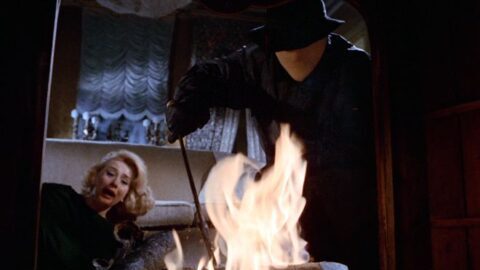
That night, Nicole visits Scalo’s store to supply him with cocaine where she’s killed by the murderer, but the diary isn’t on her. Marco, a nervous, pill-popping dresser who has unrequited feelings for Peggy, visits her at her apartment offering protection, which she politely refuses. She’s then confronted and beaten by the killer, who writes a demand in a notebook for the location of the diary, but says that she burned it in her fireplace because it contained details of something very secret she didn’t want anybody to know. Secret affairs, blackmail, abortions and drug addiction; it’s all happening, About two thirds of the way through it’s revealed that we have two killers [Scream was certainly not first there!]. The plot is well put together, but you could say with some justification that Bava seems to most enjoy having his doll-like women, most of whom look rather similar to each other, getting attacked and slaughtered, and the death scenes are certainly central to his film, but then the men in his film aren’t very nice either. Bava’s usual nihilistic view on relationships is on show here. Everyone seems to be involved with someone else, but there doesn’t seem to be much genuine love except in the one relationship that leads to mass murder. The salon setting is used in a highly ironic manner, its surface beauty revealing darkness below the surface. The costumes, the set dressings and so forth are often lovely to look at, but one is constantly aware that sordid activity could be taking place behind the scenes. One tracking shot has the camera actually bump into a mannequin; it’s so obvious that it was surely intended to slightly jar the viewer, not to mention Bava’s perhaps not-remarked enough sense of humour, something also shown during a deliberately melodramatic bit when the diary is mentioned and everyone in the room, who clearly wants the diary for different reasons, pauses and is given a closeup.
All the murder sequences are tremendous set pieces, the victims-to-be often bathed in Bava’s gorgeous colour schemes of usually blue, purple and red before they are viciously killed. At one point, a blue light seems to flicker from on to off repeatedly, but in a subtle way so you barely notice it. At another, a shot of someone undressing in their bedroom seems to b through a window, but is actually simply framed by leaves. Bava doesn’t actually show much blood, but stages the kills for maximum impact with much physicality. A claw hammer in the face is proceeded by close-ups of the hammer and the woman’s face so that showing the actual damage isn’t that necessary. A hand and face burning on a hot stove remains extremely unpleasant while one sequence is both suspenseful and somewhat comic as the killer is interrupted in his work and has to hide the victim to finish her off later. Bizarrely, you almost want the killer not to be caught in this scene, strange as this might seem! The very agile murderer is quite scary despite just wearing a trench coat, a black fedora and a stocking mask, which makes him look like he has no face, and over which patterns of light and shadow sometimes appear. Bava often seemed interested in fashion, possibly mostly for its visual possibilities, but always appeared to have a wry attitude to it. The police procedural scenes in Blood And Black Lace come across as a little dull, with characters often taking ages to respond to others, though it’s a lovely touch that Sylvester doesn’t actually solve the case during the film’s running time. Perhaps Bava was deliberately showing his own weariness with such scenes which are also shot fairly matter of factly, but it does mean that Blood And Black Lace is a touch uneven and almost seems like the work of two directors. It’s not a major problem, but it does mean that I don’t think it quite has the consistency of Bava’s very best four or five films. That’s not to take anything away from it though, because it still exhibits more artistry than most other slasher films, and you can almost also say that Dario Argento took most of his aesthetic from this movie while also building on it.
The acting in a Bava film is rarely the best and it doesn’t help when you can’t hear the cast’s original voices, but Eva Bartok does very well as a confused woman who will do anything for love. Cameron Mitchell played Vikings for Bava in two other films but here gets quite a multi-layered role to get his teeth into, showing what a good actor he really could be. And Dante Di Paolo is good as Scalo. The score is full of dramatic musical sequences, a couple of them taken from his score for The Whip And The Body, but it’s that main theme, heard in a variety of guises, which you’ll remember. Ubaldo Terzano is credited with the amazing cinematography though of course it was really a joint job between him and Bava. Blood And Black Lace perhaps seems slightly stilted in places, but it’s still essential viewing for any horror fan, tremendously fascinating but hugely enjoyable too. As with at least half of Bava’s works, it should be used as an example to make a film visually interesting – in fact its lighting should be studied by film students – but Bava’s distillation and fetishism of aspects of the psycho thriller also most definitely has a soul, even if it’s a somewhat twisted one. nd winds up in a very interesting, unexpected and even moving fashion, with the whole plot engine being basically engineered by two lovers in a tempestuous and destructive relationship. The dramatic closure to their story is what the film finishes with and what you’ll first think about afterwards. The only two people we end up caring about are the killers, but we do end up caring.
Rating: 









4K ULTRA HD BLU-RAY LIMITED EDITION CONTENTS
Brand new 4K restoration from the original camera negative by Arrow Films
While I’m not equipped to watch films in the UHD format, I do own the 2915 2k Arrow release and used to have the 2005 VCI DVD, so can certainly say that this restoration is even better than those. Bava’s colour schemes are beautifully and accurately rendered, yet there’s no colour bleed, nor black crush. Depth is also hugely impressive, perhaps truly showing for the first time how much movement between foreground and background plays a part in Bava’s compositions. Stunning!
4K (2160p) UHD Blu-ray presentation in Dolby Vision (HDR10 compatible)
Restored original lossless mono Italian and English soundtracks
Most of the male voices were done by Paul Frees in this dub, though it’s hard to tell. It’s a solid effort, though some adult material was toned down in the dialogue of the English version from the dialogue of the Italian dub, such as somebody declaring someone to be the killer because of his apparent impotence.
Optional English subtitles for the Italian soundtrack
Optional English subtitles for the deaf and hard of hearing for the English soundtrack
Audio commentary by Mario Bava’s biographer Tim Lucas
Arrow have retained all of the special features from their 2015 release except for the short film Giallo for which the rights had presumably expired. This track is just what we expect from Lucas, jam-packed full of appreciation, insight and information, often based on conversations he’s had with some of the people involved in the film. Apparently Bava largely based in visual style on the lurid covers of giallo novels. Lucas also points out that the destruction of beauty is a major Bava theme, d that the main set was from Gidget Goes To Rome.,and the more subtle uses of colour such as black being more dominant when somebody is soon to die. I loved Rusticelli poignantly giving Lucas some pages of his original score with the words “To my friend Tim Lucas, who mistook this for good music”. Lucas does sometimes explain the plot, but biographies tend to be more interesting because of the lives referred to.
Psycho Analysis – a documentary on Blood and Black Lace and the origins of the giallo genre featuring interviews with directors Dario Argento (Suspiria) and Lamberto Bava (Demons), screenwriter Ernesto Gastaldi (All the Colours of the Dark), critics Roberto Curti and Steve Della Casa, and crime novelists Sandrone Dazieri and Carlo Lucarelli [55 mins]
Most or all of the interviews here seem to have been taken from the 2014 Courmayer Noir in Film Festival. Together they form a nice piece about the subject, though some contradiction makes itself known. Gastaldi believes that gialli should have logic and realism so that a viewer realises that he or she could have solved the mystery if attention had been paid, but Lucarelli, on the other hand, likes the element of irrationality which is more unsettling because “reality is made up of irrationality, reality is made of madness, especially criminal madness”. We’re reminded that Bava publicly expressed a low opinion of himself [“I make only big bullshits”], perhaps because of an inferiority complex to the art house directors who were getting all the attention and acclaim.
An appreciation by Hélène Cattet & Bruno Forzani, the creative duo behind Amer and The Strange Colour of Your Body’s Tears [10 mins]
The two filmmakers go theough what makes a great giallo, including the killer really being the main character, the elaborate surroundings, the violence and the eroticism, and most interesting of all a strong degree of experimentalism in what is essentially a commercial genre but which allows for a lot of freedom.
Gender and Giallo – a visual essay by Michael Mackenzie exploring the giallo’s relationship with the social upheavals of the 1960s and 70s [38 mins]
This featurette, with possibly two much emphasis on the wilder gialli and not enough on the more restrained kind, divides the films into essentially male and female forms, which is interesting though I’m not entirely sure accurate it is. Sure, “male anxiety, confusion and ambivalence towards the modern world” can be seen, as are women often treated as “a problem to be solved and contained”, but perhaps Mackenzie exaggerates the genre’s reflection of the changing roles of men and women in society, even if gialli were indeed made chiefly for a male audience? Still, there’s some food for thought here, and multiple split screen images of various films playing at once are cool.
Blood and Bava – a panel discussion on Mario Bava featuring Dario Argento, Lamberto Bava and Steve Della Casa, recorded at the 2014 Courmayeur Film Festival [11 mins]
Argento recalls Bava’s special effects work on Inferno and filming the rat death where the actor Sacha Pitoeiff was drunk; Lamberto Bava told a fed-up Argento to leave, then hit Pitoeiff with the knife so hard that he reacted as he was supposed to. After this, Lamberto recalls how, despite the perceived gap between respectable and commercial cinema, Bava and Fellini would often play tricks on each other while both shooting a film at the same time in the same building,.
The Sinister Image: Cameron Mitchell – an episode of David Del Valle’s television series, devoted to the star of Blood and Black Lace and presented in full [56 mins]
In two parts which focuses on Mitchell’s work. Mitchell and Del Valle seem to genuinely enjoy speaking to each other, and there are some great stories along with clips which show the diversity of Mitchell’s work.
The alternative US opening titles, sourced from Joe Dante’s private print [3 mins]
Original theatrical trailer [2 mins]
Image galleries
Limited edition packaging with reversible sleeve featuring original and newly commissioned artwork by Ilan Sheady
Limited edition 60-page perfect bound book featuring writing on the film by Howard Hughes, Alan Jones and David Del Valle, plus new writing by Rachael Nisbet and Kat Ellinger
Fold-out double-sided poster featuring original and newly commissioned artwork by Ilan Sheady
Six double-sided collector’s postcards
Arrow’s previous release of this seminal film was hard to beat, but it now looks even better in this new edition, even if you just watch the Blu-ray, though seeing as there aren’t any new special features the buyer may need to think whether it’s worth it. I’m sure the UHD buyers will need no persuasion. For them, this release comes Highly Recommended!

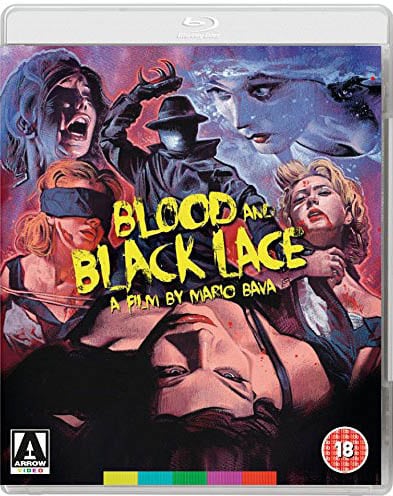

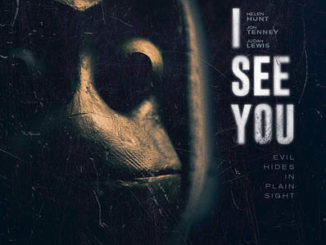
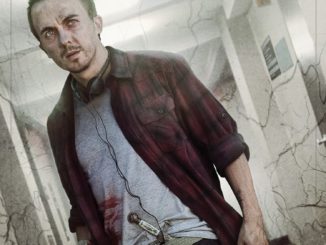
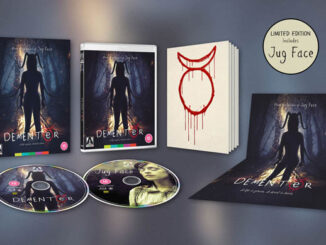
Be the first to comment